#biedermeier fashion
Explore tagged Tumblr posts
Photo

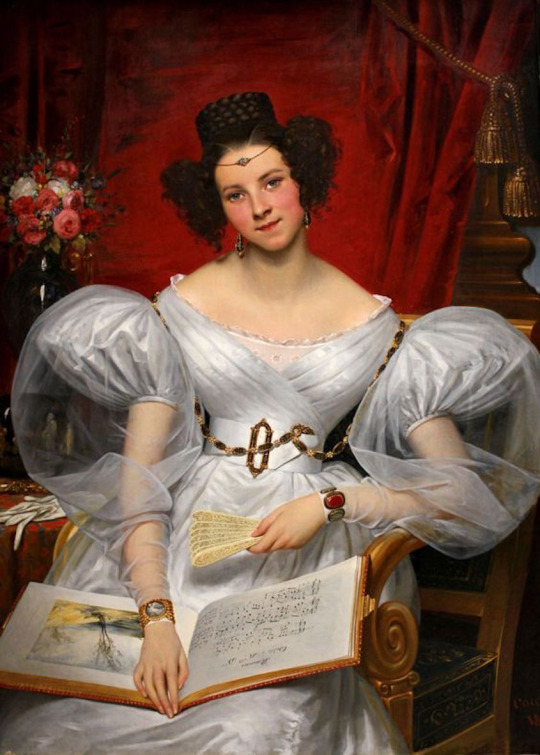




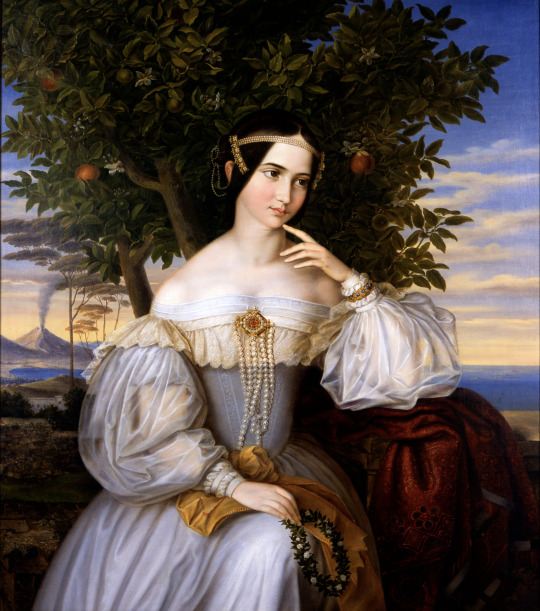
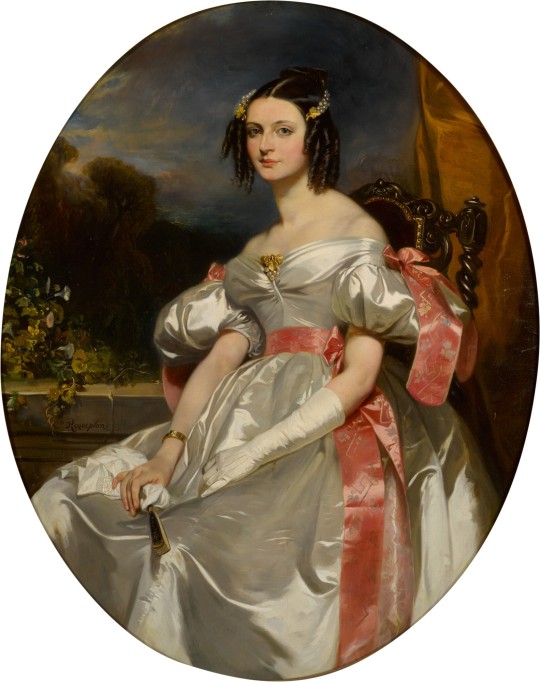
More pre-Victorian 1830s (from top to bottom) -
ca. 1830 Evening or wedding dress (location ?). From tumblr.com/andrayblue 1080X1350.
1831 Marquise Chasseloup-Laubat (probably Marie Augustine Antoinette Le Boucher des Fontaines) by Joseph-Désiré Court (Musée des Beaux-Arts de Rouen - Rouen, Normandie, France). From their Web site' enlarged by half 845X1181.
1830-1832 María Cristina de Borbón, Queen of Spain by José de Madrazo y Aguado (Prado). From their Web site 1280X1745.
1832 Marie Franziska von Freytag by ? (Salzburg Museum - Salzburg, Salzburgland, Austria). From tumblr.com/history-of-fashion 766X963.
1832 Amalie Klein by Friedrich von Amerling (Österreichische Galerie Belvedere - Wien, Austria). From tumblr.com/history-of-fashion; fixed spots & cracks throughout w Pshop 2893X3508.
1835 Illustration from La Mode by Paul Gavarni. From tumblr.com/clove-pinks 1650X2048.
1836 Marriage Portrait of Charlotte de Rothschild by Moritz Daniel Oppenheim (Israel Museum - Jerusalem, Jerusalem District, Israel). From Google Art Project.
Lady with Pink Sash by Camille Joseph Etienne Roqueplan (Sotheby's - 29Jan22 auction Lot 703) 1583X2000.
#1830s fashion#Romantic era fashion#Biedermeier fashion#Louis-Philippe fashion#natural waistline#Marquise Chasseloup-Laubat#Joseph-Désiré Court#cross over bodice#chemise#quarter-length puffed inner sleeves#long sheer outer sleeves#ferroniere#María Cristina de Borbón#court dress#Marie Franziska von Freytag#Apollo knot#Amalie Klein#Friedrich von Amerling#Gigot sleeves#Paul Gavarni#Charlotte de Rothschild#Moritz Daniel Oppenheim#Camille Joseph Etienne Roqueplan#waist band#full skirt
371 notes
·
View notes
Text
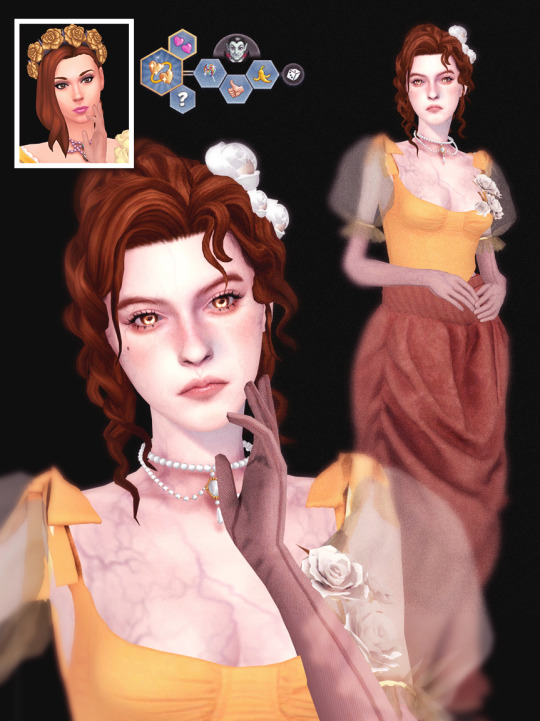
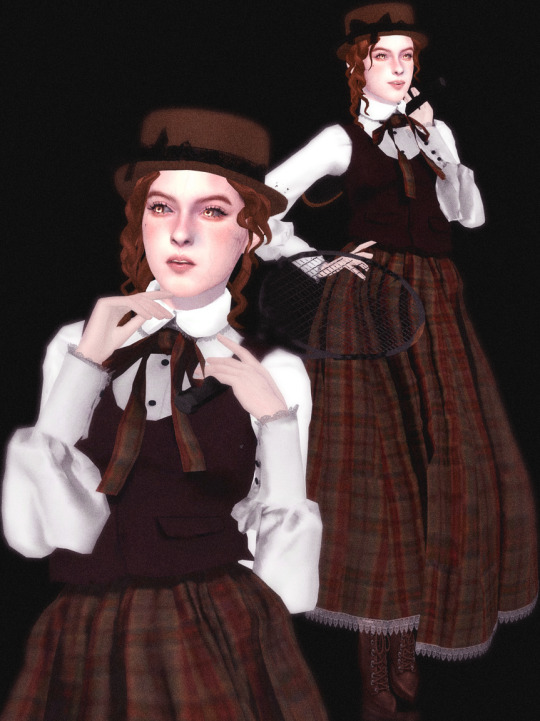



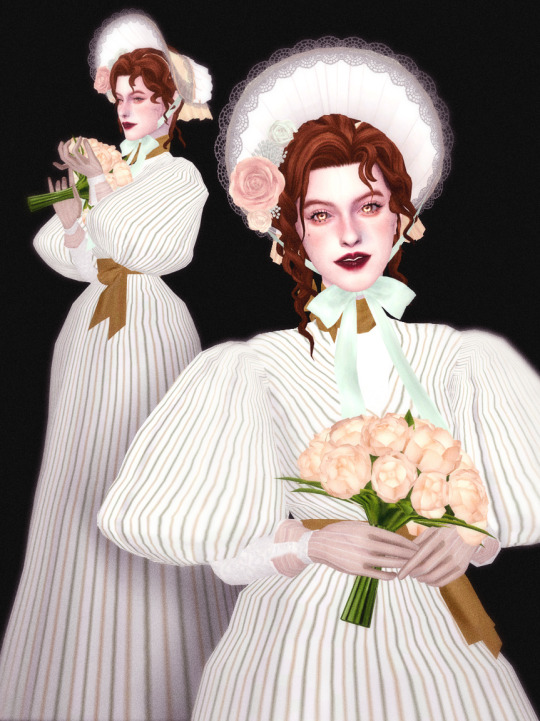
Inna Cents - townie makeover
Inna Cent appears in trailers and promos for The Sims 4: Vampires and could be load from Maxis gallery. I was pretty upset she was not an official townie of Forgotten Hollow, cause there is smth interesting in her backstory and relationship with a sassy vampire Caleb. Anyway I can imagine my own LORe for her.
Occult sims are most fun to makeover because you can play with fashion and choose for them the most unusual and non-realistic fits. For Inna I choose some looks inspired by Biedermeier\Victorian period, because she probably was turn in to vampire at second half of 19th century. And her prototype surely was Lucy Westenra (from 'Dracula' 1992). But I add to her kinn list two fictional ladies who's also like yellow and historical dresses - Edith Cushing (Crimson Peak) and Belle (Beauty and the Beast) which suits more to her shinny and gentle personality and fashion choices. Roses and butterflies as symbols of her innocent soul
I'm trying not to change face features and keep the original EA genetics. But I changed Inna's skin and make her more pale. Because for me she is not alive anymore and can't be that peachy pink, because her blood system doesn't work. And I hope this doesn't look like 'white washing'
1. Hair by @thatonegreenleaf,roses hair pins by @kikiw-sims, corset by @astya96cc, skirt by @evellsims, puff sleeves by @dream-girl, rose brooch recolor by @elfdor, gloves by @sentate, necklace by @aladdin-the-simmer 2. Hair by @thatonegreenleaf, hat by marigold, dress by @shendori boots by @serenity-cc, tennis racket by @haneco410 3. Hair by @buzzardly28, hair accessory by @buzzardly28, dress by @strangestorytellersims, necklace by @regina-raven, lace fan by @simsonico, gloves by @atelierlena 4. Hair by @simandy, Dress by @belaloallure3, lacy turtleneck acc. by marigold, puff sleeves by @dream-girl, candelabra lights by moo2shelly, flying butterflies by @oydis, butterflies headpiece by glaza 5. Hair by @thatonegreenleaf, dress by @simnasimsworld, cape by @zouyousims, furr muff by @vintagesimstress, gloves by @bluecravingcc, little bird by @sims4-sin-a 6. Hair by @thatonegreenleaf, bonnet hat by @yuu-tori-tori, dress by @vintagesimstress, bouquet by @beocreations, gloves by @vibrantpixels
Big thanks and love to all CC creators!
#Inna Cents#townie makeover#townie remake#sims 4 vampires#sims vampires#sims 4 victorian cc#ts4#the sims 4#sims 4#sims 4 cc#sims 4 clothes#victorian fashion#biedermeier#dracula#sims4lookbook#ts4 lookbooks#ts4 lookbook#s4 lookbook#sims 4 lookbook#maxis mix
689 notes
·
View notes
Text

Reception of Grand Duke Alexander Nikolayevich by Prince Metternich in the Vienna Hofburg in 1829 by Ferdinand Georg Waldmuller, 1839.
#classic art#painting#ferdinand georg waldmuller#austrian artist#19th century#biedermeier#history#modern period#holy alliance#klemens von metternich#men#fashion#black clothing#painting in painting#room#hofburg#austria
19 notes
·
View notes
Text
Wow! This is a really impressive collection of images of women in those bonkers bananas hair styles of roughly 1825 - 1835. Magnificent!
I am fascinated by the sleek close-to-the-head styles, especially ones with little snail-coils of braids n stuff. I also appreciate the asymmetry in most of these styles. Very artistic!
I suspect that most of these are augmented with false curls, braids, and extra hair bits. Even the healthiest head of hair doesn't necessarily have the length or volume for this sort of sculpting without extensions of some kind.
These are brilliant pieces of living sculpture. The people who made them were true artists.
There's something wonderful about these explosive, assertive, creative pre-Victorian efflorescences.
Hairstyles and hats, ca. 1830: part 1
Another gigantic fashion post today.
Hair, hair, hair. Let’s talk about hair. It’s such an important marker of beauty in any given period, for men as well but especially for women. I always figured this is why historical movies can be so reluctant to portray women in period hairstyles if those hairstyles happen to conflict with modern standards of beauty. I can’t tell you how many times I’ve seen a period flick and been so impressed with the work of the costume designer, only to have their meticulous efforts spoiled by the shoddy hair and makeup design.

^^^Yep, you too, Les Mis movie. What is with this hair??? My modern eyes say, “hey, it’s cute,” and my 1830s eyes say, “wtf is this bedhead? put your hair up, girl!”
This seems to be a thing for actresses more than actors, and I don’t know whether it’s the actresses who demand that they not be “uglied” up, or the director, or the hair designer him/herself, but whoever it is needs to grow up and realize that hot women will still be hot in 1830s sausage curls and apollo knots, and hot men will still be hot in mutton chops and under-the-chin beards. Sorry, /end rant. But really, movie industry, can we get on this?
So, ca. 1830 ladies’ hair. The most stereotypical image of this period’s hairstyles is the ringlets on the sides and the coiffure à la chinoise up the back, garnished with all kinds of wild shit, from real flowers to tortoiseshell combs, from lace veils to ostrich plumes, from strings of pearls to turbans:


Coiffure à la chinoise is a hairstyle accomplished by pulling the majority of the (very long) hair tightly back and twisting it up into huge loops on top of the head. This political cartoon (which I’ll discuss at more length some other time, because it is awesome) shows the scalp-tugging process of hairdressing:

Professional hairdressing was mostly a men’s occupation ca. 1830, though many ladies’ maids were also used to do a lady’s hair on a day-to-day basis. The professional hairdresser would make house-calls for special occasion hairdos, especially for very wealthy clients, but he also worked out of a brick-and-mortar shop. These hairdressing salons, much like those of today, were usually located in fancy shopping districts, especially the upscale shopping galleries like the Galerie Vivienne or the Passage des Panoramas (more on these in a later post–I love 1830s shopping galleries). The professional hairdresser advertised through fashion plates, which often give the name both of the dressmaker and the hairdresser whose fashions are being featured. There are also fashion plates just for hairstyles or hat styles, which show a front and back view for each. The hairdresser’s art was just that: an art. His hairstyles were living works of art, statues sitting on top of a lady’s head, and he could command fees accordingly. He would be employed either by the very wealthy or for special events. Less wealthy women could have their maids do their hair, or else do it themselves.
The typical process of 1830 hairdressing began by parting the hair into three sections: one shorter one on each side of the forehead and one longer one in the back. The hair’s part is sometimes located in the center, sometimes on the side, and sometimes v-shaped, like this:

The side sections are curled into ringlets with curling tongs (or else with curling papers or cloths), while the back section is yanked (painfully) into those loops and braids and pinned into place. Pomade is used to keep the hair on top and in the back smooth and straight and shiny. Lots of fake hair pieces are used, too, since of course not everyone is equally endowed, hair-wise.

^^^Here are some mid-19th century false curls mounted on a ribbon, to be tied on the head.
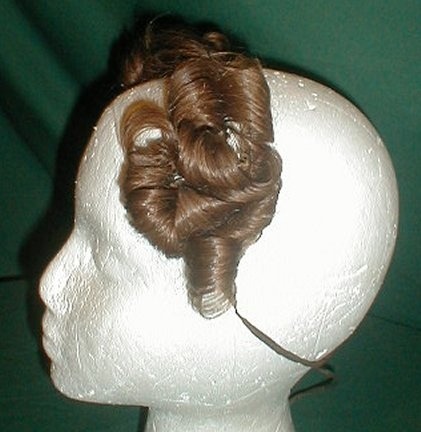



^^^This is another set of ca. 1830 false curls, with its own storage box and all! Of course, when I say “false,” I don’t mean the hair: it’s real human hair. This is the sort of thing that Fantine’s glorious blonde hair would have gone towards making. There are also fake hairpieces for the back of the hair, fake curls, fake loops, fake braids, and so on, but I haven’t yet come across any surviving examples. Female Enjolras would have had to make generous use of these when dressing as a woman, since her hair is cut short for her masculine disguise. (Oh Jesus, let’s not consider the possibility of a side story where female Enjolras ends up unwittingly using hairpieces made from Fantine’s hair…………O__O)

^^^Another late 1830s hairpiece. Most of these fake hairpieces would be intended to be used underneath a morning cap or turban, with just the curls sticking out the front, like so:

This makes it a little easier to see how the fake curls could be tied on with a ribbon or fixed with a net and still not be too obvious.
Back to the coiffure à la chinoise. This style supposedly got its name because 1820s/30s people thought it looked like the traditional hairstyles of Chinese women. (I can kinda see that…..? Though really it looks more like the traditional topknot of Chinese men.) The giant hair loops of the coiffure à la chinoise are sometimes called “apollo knots” as well, though really that applies better to loops like these ladies have, which are imitations of those seen on antique Greek statues of Apollo:

These ladies also have hair pins shaped like a “cupid’s arrow,” which seems to have been a trend at one point:




There are plenty of apollo knots and chinoise hairdos in this period, but really, the hairstyles of the late 1820s/early 1830s are actually quite varied, much more so than I thought before I started researching this stuff. The size and number of the curls, whether they are pinned up on the head or allowed to fall in ringlets alongside the face, or whether there are even curls at all; whether the back of the hair is pulled into loops, swept up in ringlets, braided into a crown shape, and whether it’s decorated with feathers, braids, beads, pearls, hair combs, pins, flowers, veils, ribbons, etc.–all of these points vary widely, sometimes from year to year, but also within each year, according to the individual’s taste.
I’m just going to put up a bunch of hairstyles from between 1825 and 1835, and you can see the wide variety for yourselves:











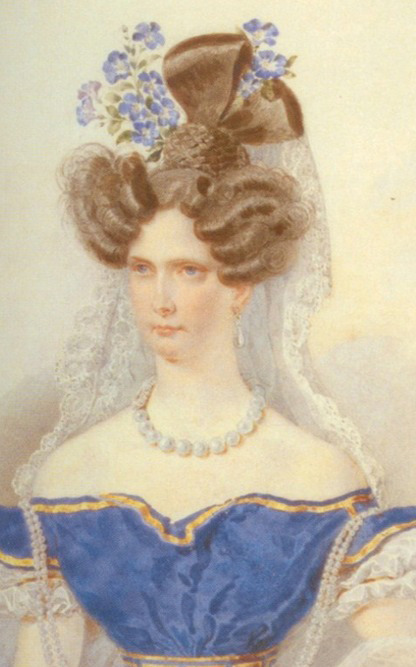








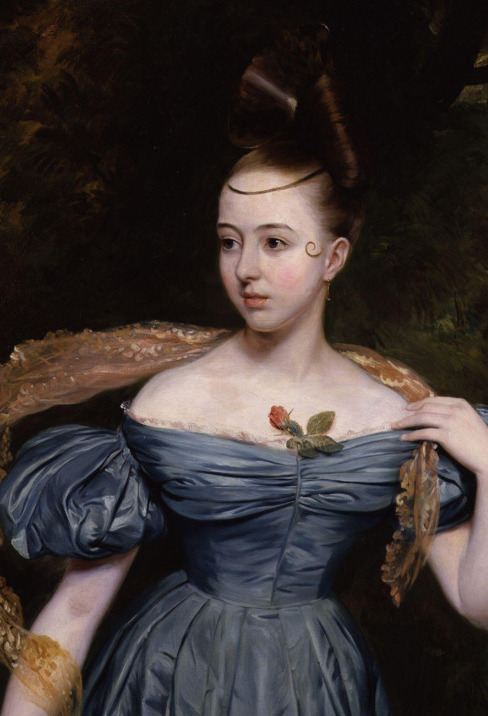





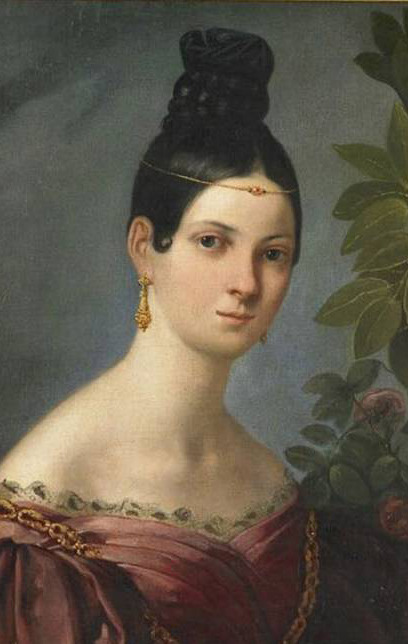






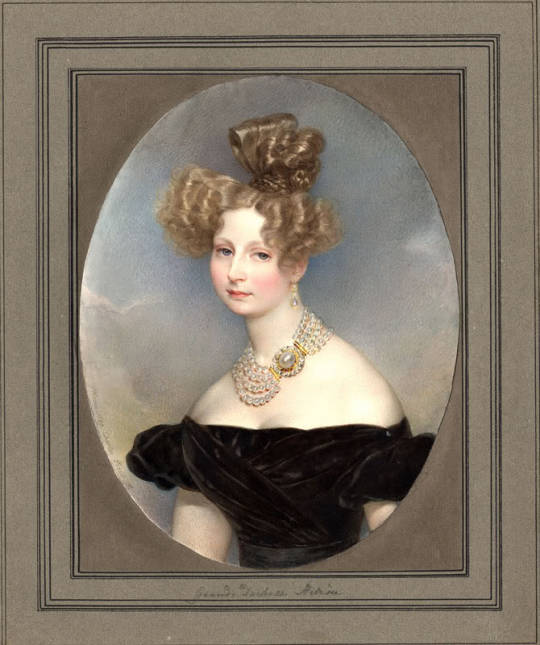










Remember, all of these examples are from 1825-1835. The smoother, sleeker styles generally tend to be towards the end of this period, and the curlier styles towards the beginning of the period, but sleek styles appear in the late ‘20s and curly styles appear into the ‘40s, so it’s hard to generalize. All the beauty in variety!
2K notes
·
View notes
Text
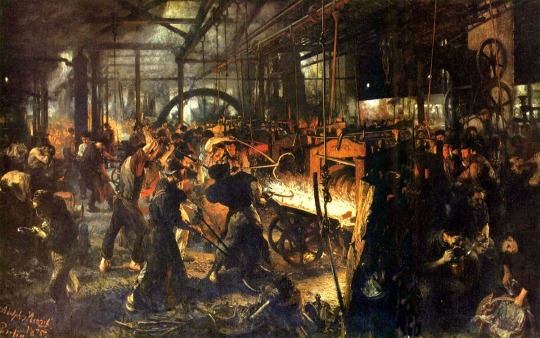

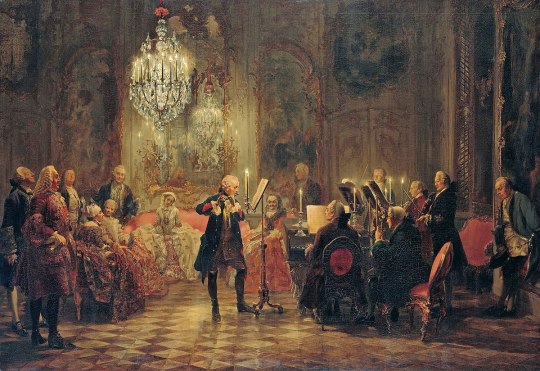
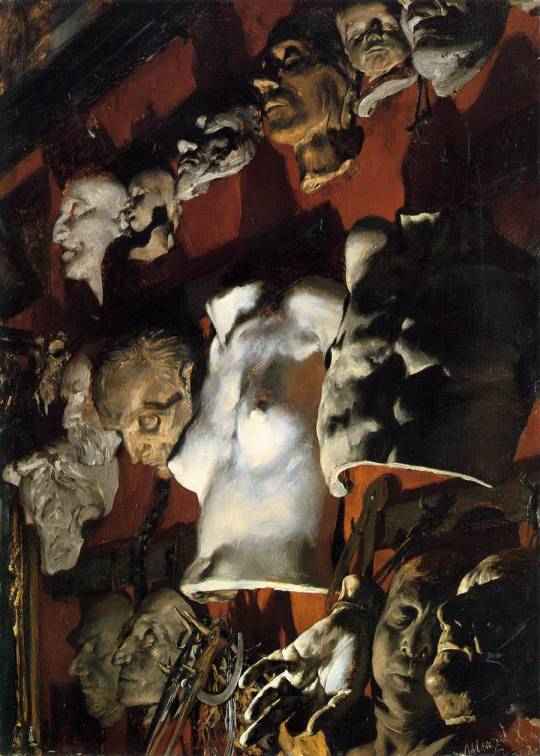
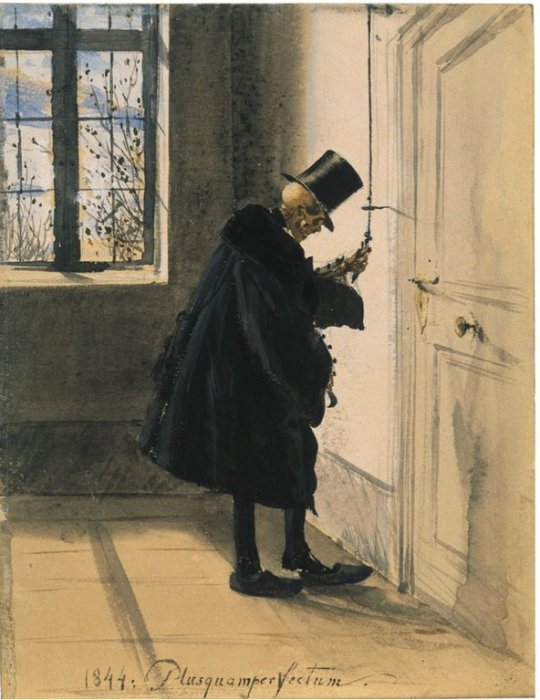
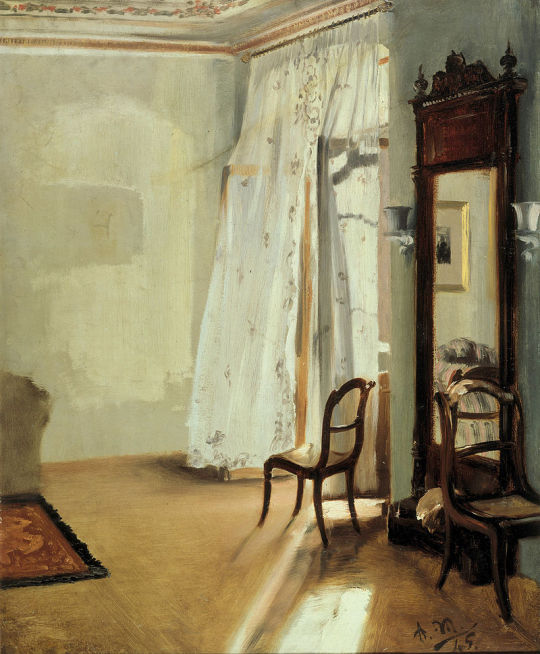
THE QUEST FOR REALITY; ADOLPH VON MENZEL
Adolph von Menzel (1815-1905) was a German painter and printmaker who portrayed life in 19th-century Prussia, historical events, and everyday scenes. He was largely self-taught, and his skills developed practically through lithography and drawing experience.
The Iron Rolling Mill, 1875
This painting captures the intense labour of steelworkers in a Prussian industrial mill. There is a detailed expression, both of the machinery and the workers, illustrating the social condition of working-class people during the Industrial Revolution and Menzel's turn from historical themes to contemporary issues.
The Dinner at the Ball, 1878
It is a portrayal of an elegant high-society scene, coupled with detailed portrayals of fashionable guests and luxurious surroundings, all of which bring out the Biedermeier style. It captures the 19th-century social life, proving Menzel's skill to render social dynamics and intimate moments.
Frederick the Great Playing the Flute at Sanssouci, 1852
It portrays the tranquil scene of Frederick II music-making in his palace. The painting showcases Frederick's dual character as a ruler and as a musician, evincing cultural sophistication and the opulence of his court. The composition is the epitome of Menzel's great admiration for Frederick and his commitment to a history of Prussia done with emotional depth and realism.
Studio Wall, 1872
Menzel painted a nighttime view of his studio wall, with illuminated plaster casts, including death masks and classical figures. This work highlights Menzel's thoughts at the time; he had been ruminating over life and death and artistic posterity. It was a touching memorial to his friend Friedrich Eggers as well as a strong demonstration of his mastery of dramatic lighting.
The Visit From Death, 1844
Death is depicted as a humble professional who is neither wrathful nor unkind. Just simply doing its job and has no ill will for those it visits upon. It even has a sense of respect, taking its clogs off before entering the home. Menzel followed up in 1845 with a hilarious painting that suggests that the arrival of Death isn’t so final after all!
The Balcony Room (1845)
Inspired by his journeys to Paris, Menzel depicts a sparsely furnished apartment full of sunlight. This painting foreshadows impressionist techniques since it's totally oriented with light and atmosphere, marking an important turn in Menzel's career away from historical themes and toward contemporary genre scenes.
137 notes
·
View notes
Text
54 notes
·
View notes
Video
youtube
Unique Arrangements With Flower Picks
The flower arrangements that one picks for a wedding ceremony ought to mirror the personal preferences and style of the lady and lucky man. For the presentation of flowers at a wedding, you need to consider everything, from the dcor to the trimming, the greenery and the colors that will be used for the decoration of the passageway, the seats, the special raised area, the highlights and the wreaths. Flower picks are adaptable instruments that assistance to make click here to learn more alluring floral arrangements for such special occasions. By and large, a standard flower pick will be around six inches long. Flowers or other dcor components can be connected using the wire reaching out from one of the closures of the floral pick.
Flower Picks: Ideas for the Wedding Bouquet
The wedding bouquet is one of the key components of the flower arrangement in a wedding ceremony. Here are a few ideas for using flower picks for your wedding bouquet.
1. Colonial Bouquet: otherwise called the 'round' bouquet. This flower arrangement for the wedding bouquet has been used since the Victorian time. The flowers are grouped together either in a tight or a free cluster. This arrangement of the wedding bouquet works out in a good way for both formal as well as casual flower arrangements.
2. Biedermeier: This arrangement is inspired by European impacts and consists of various sorts of flowers of different colors. The flowers are organized in a roundabout fashion.
3.Nosegay: This floral arrangement is portrayed by a round bundle of little flowers. It usually has ribbon decorations and greenery added to the arrangement.
4. Overflow Marriage Bouquet: This bouquet arrangement is described by a path of flowers or foliage, which stretches out underneath the primary bouquet, giving the wedding bouquet a more exquisite and formal appearance. If you want a more traditional look, the bouquet can sit settled in a tulle or ribbon bouquet collar.
5 notes
·
View notes
Text
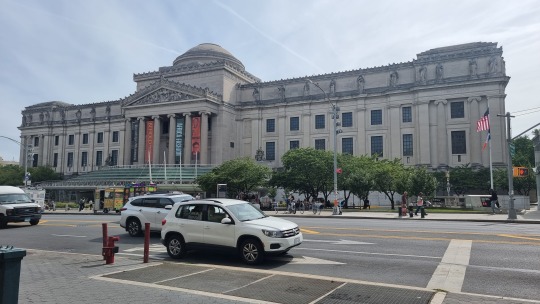
New York, Samstag, 16. September 2023
Brooklyn Museum
Das Museum zeigt eine ganze Reihe von Sonderausstellungen, unter anderem zu Mode in Afrika, zu feministischer Kritik an Picassos Verhältnis zur Frau und zu "Monet to Morisot: The Real and Imagined in European Art".
Darüber hinaus verfügt es über Sammlungsbestände zu europäischer, amerikanischer, asiatischer, islamischer, assyrischer und Aegyptischer Kunst.
Schon in der Subway macht sich das Museum bemerkbar, nicht nur mit dem Namen der Haltstelle - auch hier die üblichen Kacheln und liebevoll gestalteten Mosaike -:

... sondern auch mit eingebauten Kunstwerken:


Die "Africa Fashion" zeigt eindrückliche Kreationen, die zum Teil afrikanischen Einfluss verraten, manchmal aber doch einen internationalen Stil anstreben:
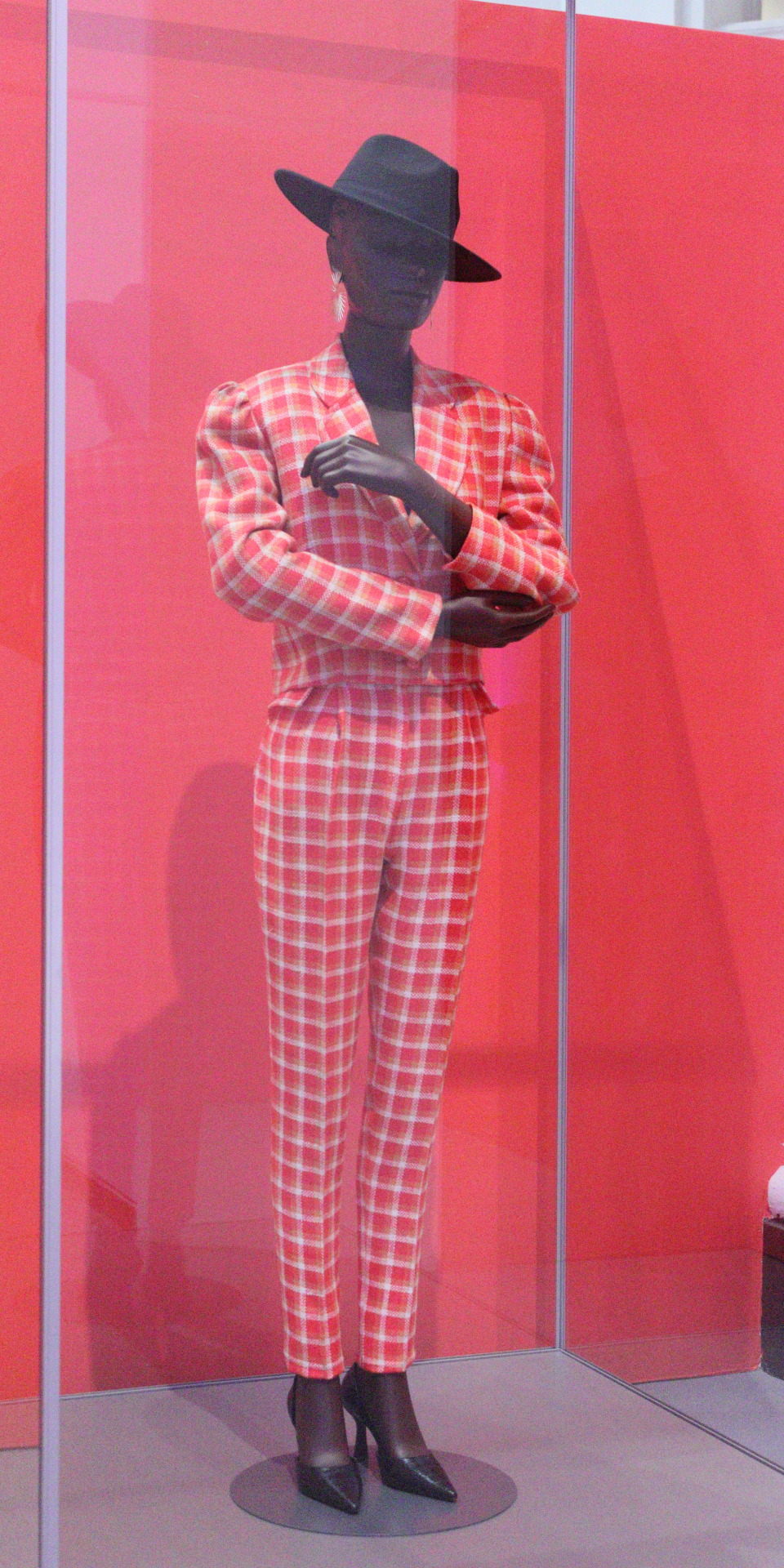

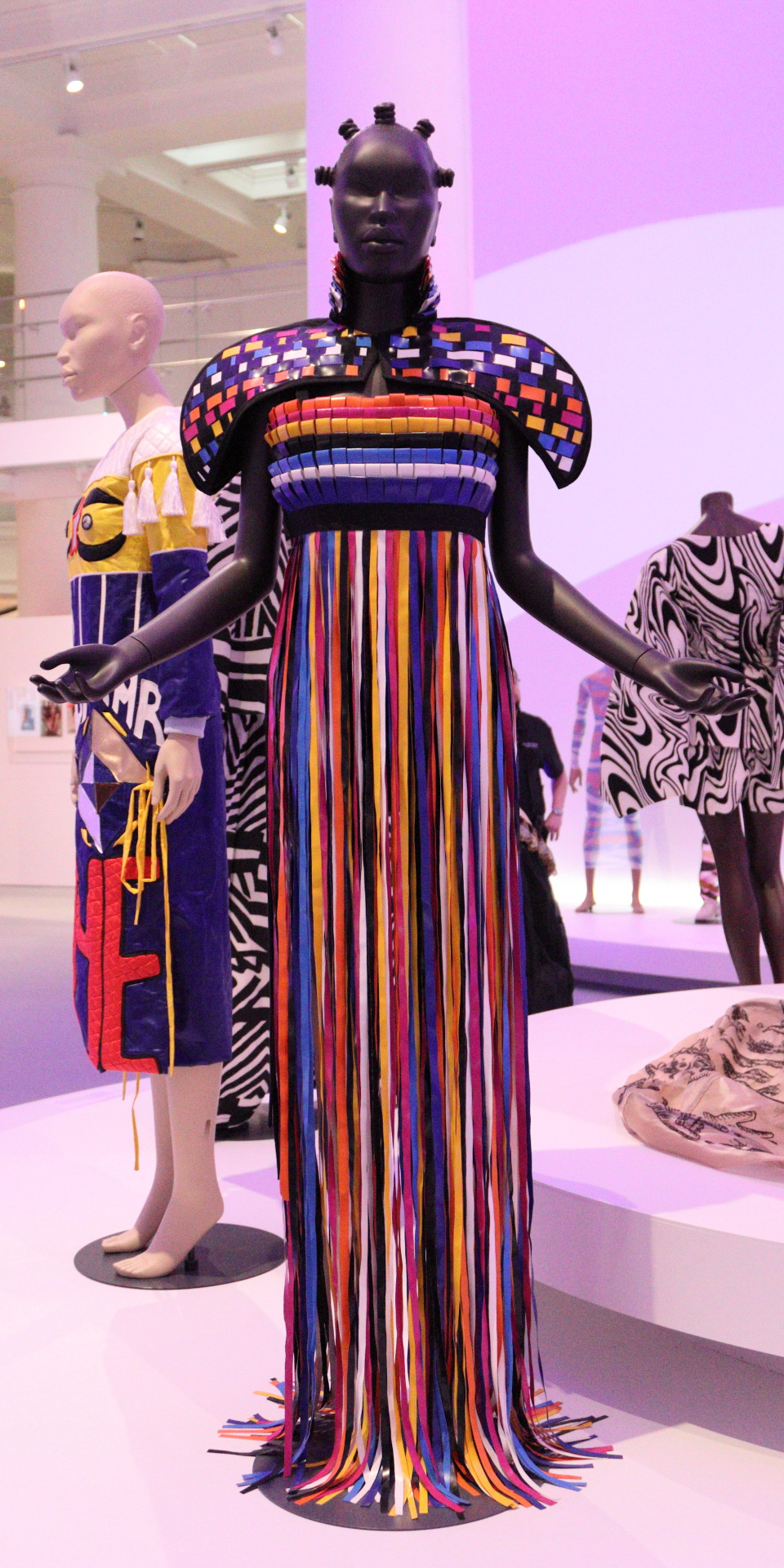
Und noch ein paar Schmankerln aus der Sammlung. Dies da sieht doch ganz nach so etwas wie amerikanischem Biedermeier aus:
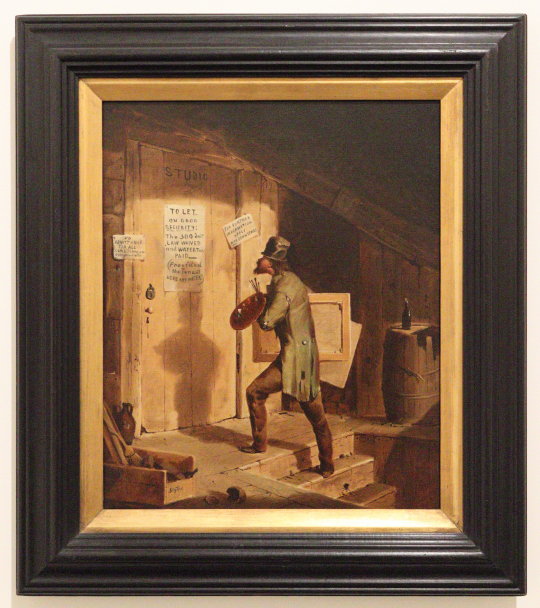

Und dann doch noch ein europäischer Klassiker:
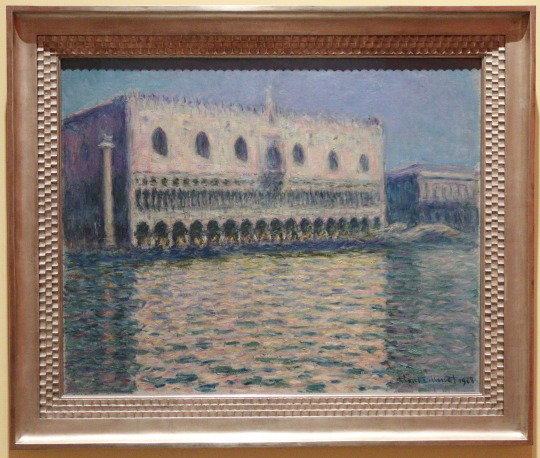
1 note
·
View note
Photo
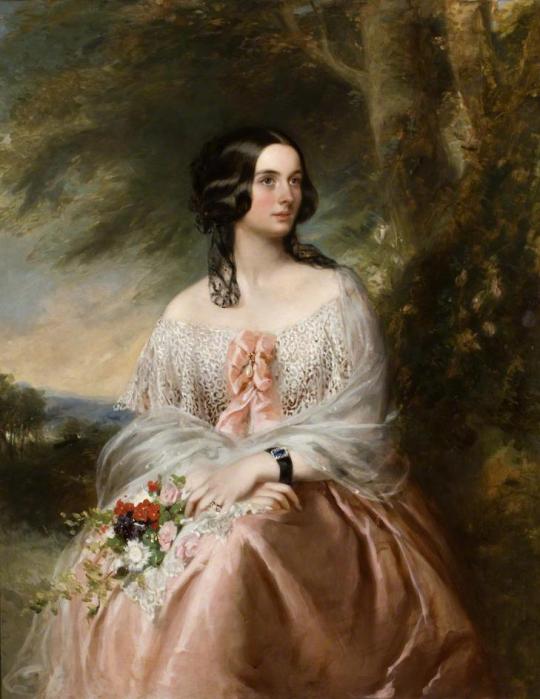
Emily, Lady Isham by Richard Buckner (Lamport Hall - Lamport, Northamptonshire UK). From bbc.co (now artuk.org) 729X944.
#early Victorian fashion#Romantic era fashion#Biedermeier fashion#Louis-Philippe fashion#Emily - Lady Isham#straight hair lappets#lace bertha#bow#wrap#full skirt
84 notes
·
View notes
Photo


Waistcoat
1830s
Germany
Antique Gowns
#1830s#19th century#masculine fashion#biedermeier#vintage#vintage fashion#antique#antique fashion#historical fashion#historical costuming#AG
6 notes
·
View notes
Photo


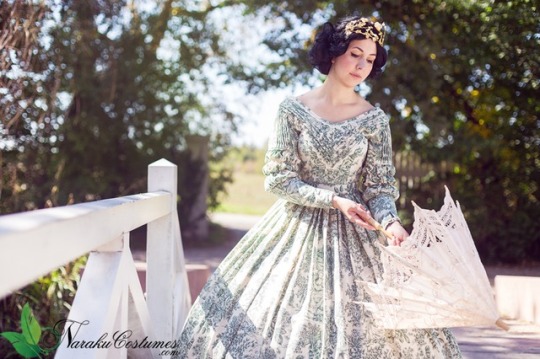
Biedermeier Dress ◊◊◊ Historical Fashion Cosplayer/Costume design: me/Naraku Photo: Chikara_Chan
Full photoset coming soon at http://www.narakucostumes.com
"The history of all times, and of today especially, teaches that woman will be forgotten if they forget to think about themselves." - Louise Otto-Peters (1819-1895)
"I may sometimes be willing to teach for nothing, but if paid at all, I shall never do a man's work for less than a man's pay." - Clara Barton (1821-1912)
"For me the beginning of all true progress in the woman question lies in women's right to vote. The strong the emphasis on the difference between the sexes, the clearer the need for the specific representation of woman." - Hedwig Dohm (1831-1919)
✄—-
you can find me here: facebook , homepage , instagram , Cosplaystore , Twitter and deviantART
#cosplay#costume#fashion#historical#historical pattern#biedermeier#19th century#history#flower#print#green#lace#wig#makeup#skirt#hoop#crown#curls#nature#woman#womanpower#clara barton#louise otto-peters#hedwig dohm#women rights
19 notes
·
View notes
Photo
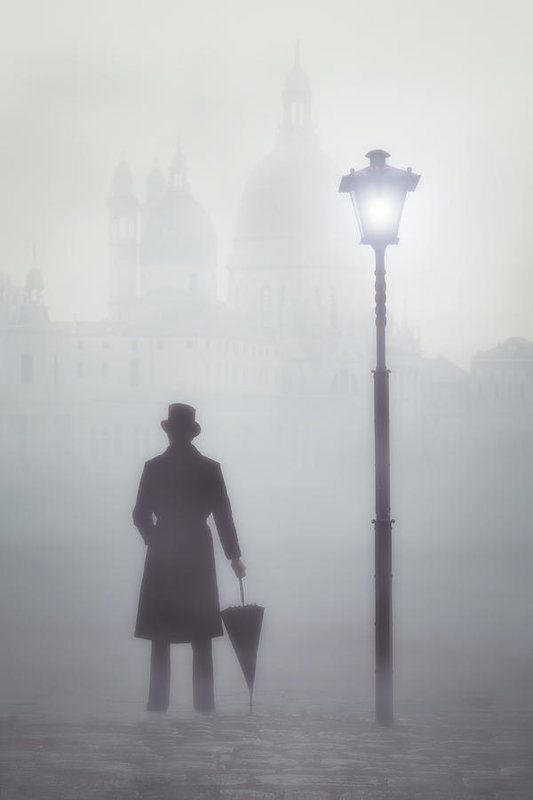
by Joana Kruse
7 notes
·
View notes
Photo
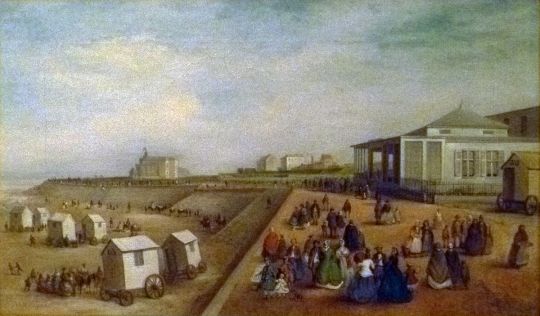
Michel Van Cuyck - Beach of Oostende - ca 1866
Collection of the City of Oostende
Michel Thomas Antonius Van Cuyck (19 August 1797, Ostend - 10 May 1875, Ostend) was a Belgian painter, watercolorist and lithographer.
From 1811 to 1817, he studied at the Bruges Academy of Fine Arts . After graduating, he set up a studio in Oostende, but was forced to supplement his income by painting houses. In 1820, he and François-Antoine Bossuet co-founded the "School voor Teeken- en Bouwkunde" (School for drawing and architecture). They had several students who became well known, including Edgar Baes , Lionel Baes , François Musin and, especially, James Ensor. The latter, however, was not impressed by what he described as the "deceptive sponge and drawing technique of this dull, boring and stillborn business".
In 1827, a blue whale washed up on the beach near Ostend. Van Cuyck made a series of paintings, depicting it on the beach, and drawings of the dissection process, which accompanied an exhibition of the whale's skeleton. It was purchased by a local philanthropist named Herman Kessels who toured with it and Van Cuyck's drawings for almost four decades. Since 1865, it has been on display at the Russian Academy of Sciences in St. Petersburg.
During the years following independence, King Leopold I transformed Oostende into a sort of Royal Residence, which developed into a fashionable seaside resort. Van Cuyck was one of the first to depict the tourism and the bathing culture there. His beach scenes and seascapes are now some of his most familiar works. He also painted Flemish fairs and landscapes, primarily in Walloon Brabant, in Biedermeier style. His portrayal of Queen Louise on her deathbed was reproduced as a lithograph.
He was the first in a long line of painters, which included his sons, Edouard-Johannes Van Cuyck (1828-1893) and Michel Thomas Séraphin Van Cuyck (1822-1890), as well as his grandsons, Michel-Julien Van Cuyck (1861-1930), Octavius-Ludovicus Van Cuyck [nl] (1870-1956) and Paul-Edouard-Alphonse Van Cuyck (1882-?).
9 notes
·
View notes
Photo

I’m actually really pleased with how this EA outfit turned out, because it hits the right notes of mid-to-late 1830s summer dresses (white with contrasting sashes! lots of volume at the wrist! shorter skirts) with enough riffs on Californio fashion of the 1830s and 1840s that she doesn’t look totally historically inaccurate.
(Corseting wasn’t very common in the Alta California period, although upper-class women were more likely to own a corset due to their exposure to Spanish fashion trends. However, they were usually 5-10 years behind the cutting edge of fashion until the Gold Rush, so unless you were very on trend, you would still be wearing elaborate Biedermeier hairstyles and sleeve plumpers when the rest of the ladies of fashion had moved on to the bell-shaped skirt and severe middle parts.)
18 notes
·
View notes
Photo


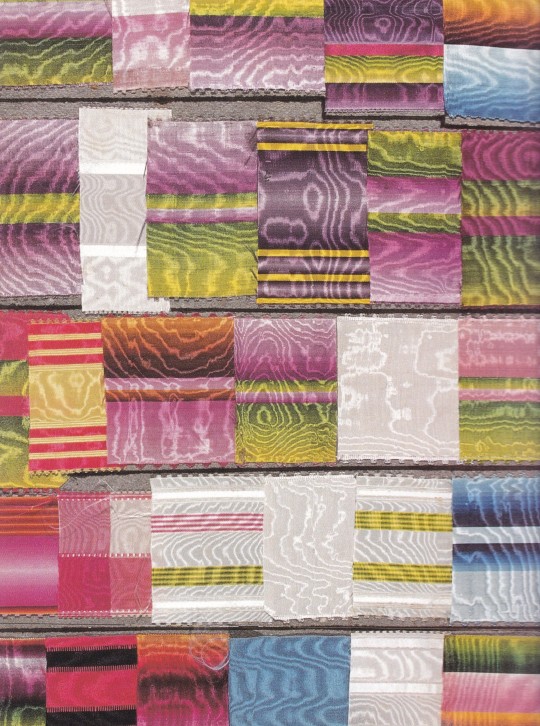


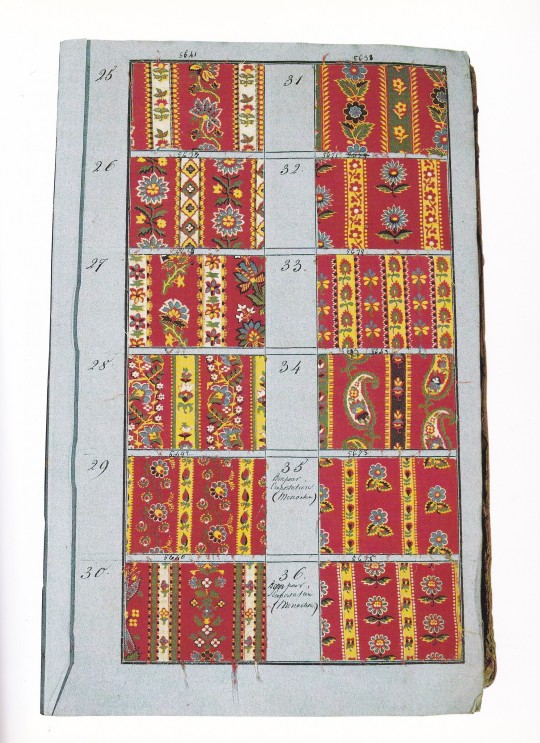



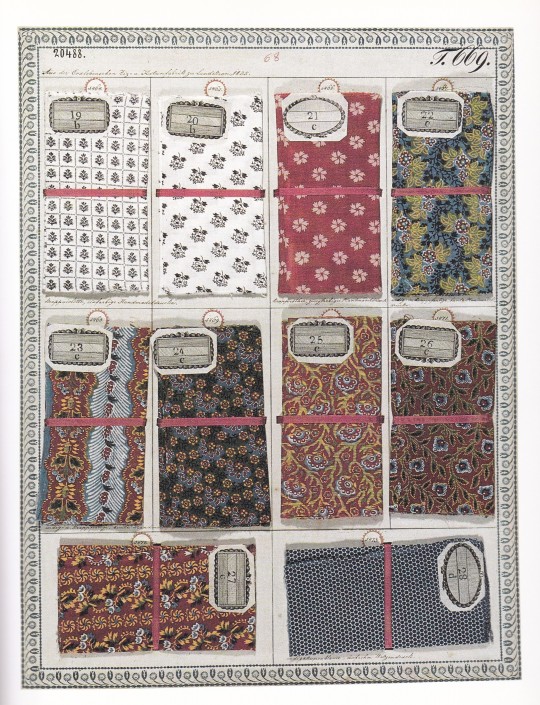
Biedermeierstoffe
Angela Völker
Mitarbeitet Ruperta Pichler
Prestel, München /New York 1996, 143 Seiten, ca. 140 Abb., davon ca. 90 farbig ISBN 9783791316475
euro 45,00
email if you want to buy [email protected]
Die Sammlungen des MAK - Österreichisches Museum für angewand Kunst, Wien und des Technischen Museum, Wien
Eine der größten deutschen europäischen Mustersammlungen von Biedermeierstoffen wird ausführlich vorgestellt. Außerdem wird der kulturhistorische Hintergrund und die wichtigsten Fabrikanten in ganz Europa genannt. Ein Überblickswerk zur Fertigung und Verwendung von Biedermeierstoffen, das für Innenarchitekten, Kunsthandwerker, Restauratoren, Kunstwissenschaftler und Sammler gleichermaßen interessant ist.
30/12/19
orders to: [email protected]
ordini a: [email protected]
twitter:@fashionbooksmi
instagram: fashionbooksmilano, designbooksmilano tumblr: fashionbooksmilano, designbooksmilano
#Biedermeierstoffe#stoffe Biedermeier#MAK Wien#textile design books#fashion inspirations#textile design inspirations#fashionbooksmilano
0 notes
Photo

“I have to admit it: Biedermeier portraits of the early and mid 19th century have a problem today. They no longer strike a chord with us, they are often considered cheesy, slightly harmless, or bourgeois. They try to speak to us, but their particular language is somehow out of fashion today. Well, I love them in any case. The setting of this portrait is possibly a bit sweet too, you'd think there's just a girl sitting in front of mountain scenery. But you can find some striking hints in the carefully arranged foreground. I took the liberty of extending the ribbon of gorgeous white fabric to embrace all these important things around her. The exotic parrot, the wonderful cashmere scarf, the grapes, and the camelia, which is actually from Asia. So just follow the white ribbon and you will see that she is anything but a mountain girl, but a noble, wealthy young woman who knows exactly what is chic in the world right now.” Ha! Such a clever and entertaining collage by @volker.hermes! The artist covers the faces of the represented figures but does not really alter the piece itself: Volker Hermes rather extends elements and plays with the given texture and outlook. posted on Instagram - https://instagr.am/p/CSnYBLao2MG/
#beautifulbizarre#volkerhermes#painting#surreal#darkart#artoftheday#artistsofinstagram#artgallery#alt
46 notes
·
View notes